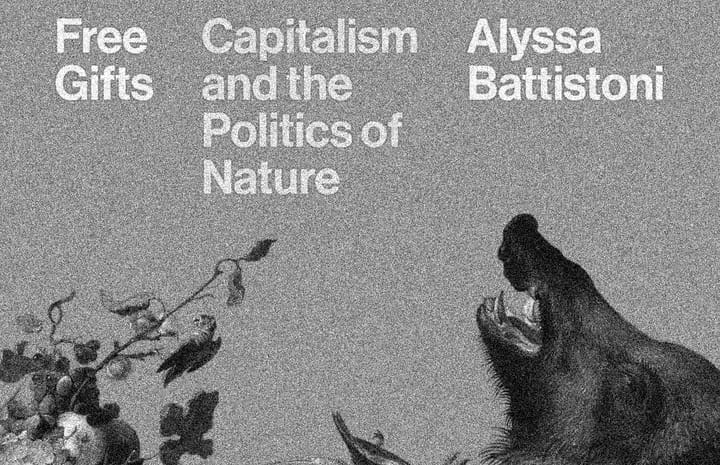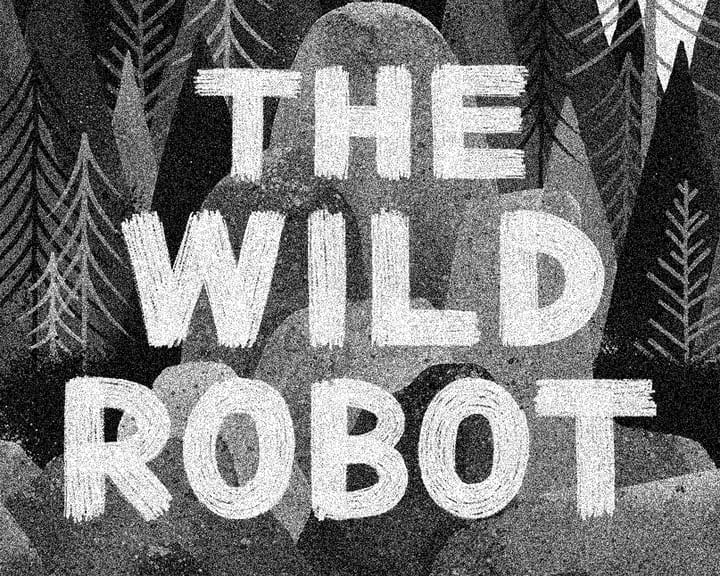The Core Priority is Working-Class Power: A Review of A Planet to Win
Fantasies of the “green imagination” are unnecessary, disorienting, and unappealing.

Review of Kate Aronoff, Alyssa Battistoni, Daniel Aldana Cohen, and Thea Riofrancos’s A Planet to Win: Why We Need a Green New Deal (Verso, 2019)
What work does the prefix “eco-” do in the term “eco-socialism”? If you believe a) that capitalism is the root cause of climate change and broader environmental degradation, and b) that only the organized resistance of the working class against the capitalist class will alter the nature of capitalism, then the term “socialist” does just fine to describe your politics. Either you are aiming to empower working-class people to wrest control over production from capitalists, and in the same movement making possible a livable future on a habitable planet, or you are not.
But if not a betrayal of confidence in the socialist project, what does the prefix “eco-” signify? I take it to be one of two things: first, that we ought to be environmentalists in addition to being socialists. There is a benign sense to this meaning: I certainly don’t want to live on a planet with 2 degrees C warming, nor do I want to be dominated by capitalists turned oligarchs. But I also want Medicare for All: am I then also a health-socialist? Why does “eco-” take precedence over any number of possible other prefixes? To this I’ve heard it argued: Well, because climate change encompasses other issues, or more boldly, because it is more important than other issues.
Here we shade into the second possible meaning: that our socialism ought to be tempered by, disciplined by, oriented first and foremost to, the existential threat of climate change. In this meaning “eco-” is not a secondary or even an equal partner but the thing itself, the “socialism” bit consigned to carrying out the work of getting us to an ecologically sustainable future. It’s one thing to say that empowering the working class against the capitalist class is a necessary precondition for the enactment of climate policy that deals realistically with the threat of climate change. It’s another thing entirely to say that we ought to be fighting to empower the working class so that we can enact realistic climate policy.
In the latter case, the endpoint—the vision of a green future—has already been worked out ahead of time, and the working class has been chosen as the appropriate vehicle. A well-conceived plan, certainly, but one that naturally raises a nagging doubt: what if working people don’t like the vision they’ve been tasked with fulfilling?
A new addition to the Jacobin series at Verso Books, written by four well-known and prolific writers from the Left on the politics of climate change and environmentalism, A Planet to Win: Why We Need a Green New Deal by Kate Aronoff, Alyssa Battistoni, Daniel Aldana Cohen, and Thea Riofrancos will likely be a go-to introduction to the Green New Deal for the foreseeable future. Through four chapters on the managed decline of the fossil fuel industry, the importance of organized labor for climate politics, proposed national infrastructural projects, and the need for international solidarity, the authors offer a broad vision for the Green New Deal—one very much in line with the big, intersectional frameworks proposed by Representative Alexandria Ocasio-Cortez and Senator Bernie Sanders—and advocate for the mass organization of working people as the path to achieving it.
Right off the bat, the authors make their theoretical commitments clear: “despite the erudite self-loathing of so much climate writing in the liberal press, the enemy isn’t us…. We’re creative, complicated beings stuck in a capitalist economic system where a tiny number of people direct most major investments to maximize profits” (4). Any proposals that do not fundamentally challenge this system, which attempt only “to harness capitalist investment for climate benefit mainly through R&D funding, mild subsidies, and pricing carbon” (20), ought to be seen as part of a “faux Green New Deal” (16). A real Green New Deal will keep the capitalist class (and particularly fossil fuel executives) in the crosshairs, result in tangible material gains for the working class, and aim for public ownership of green infrastructure. And it will do all this not out of ideological commitment but rather out of a recognition that any real climate action must attack and weaken capitalism itself or be doomed to failure. In their words, “An effective Green New Deal is also a radical Green New Deal” (18).
This is clearly the right framework for environmental politics, and what’s been missing from environmentalism for decades. Particularly promising is the Green New Deal’s call for the creation of massive jobs programs: this is really what is new in the discourse around the Green New Deal, and what ought to be its central focus. Demands to keep it in the ground, to punish fossil fuel executives, to formulate a “radical” and proportional response to dire new climate reports—all of this is standard environmental fare. What is distinctive about the Green New Deal is that it definitively moves us past the “jobs v. the environment” wedge that has plagued us for the last fifty years; it recognizes that two crises of late capitalism—a crisis of nature, and a crisis of work—must be addressed together, in one and the same movement, or they will not be addressed at all.
As Jane McAlevey has stressed time and again, if environmentalists are going to take this fact seriously, they need to move beyond abstract talk about “green jobs,” which organized labor has traditionally (and correctly) viewed as a meaningless, vague promise. There is no overcoming “jobs v. the environment” without concrete proposals for the creation of shovel-ready projects in construction, transportation, and energy through programs with project labor agreements. This is the alpha and omega of the Green New Deal: these specific, well-paid, unionized jobs, right now.
In one sense, I believe Aronoff, Battistoni, Cohen, and Riofrancos would agree with this characterization. In the third and best chapter of the book, “Rebuilding the World,” they get into the necessary particulars and are rightly unabashed about going big. Spurning the “libertarian” and “decentralized vision of climate advocates… who see solar panels and batteries as a chance for total local autonomy” (108), they cogently argue for a publicly-owned, coast-to-coast energy grid. Similarly rejecting the idea of “swapping each combustion engine car with an electric vehicle” (129), they propose a massive expansion of public transportation, centered around the “electric bus, operated by unionized drivers” (130). And most concretely they propose the construction of “10 million beautiful, public, no-carbon homes over the next 10 years, in cities, suburbs, reservations, and towns, in the most transit-rich and walkable areas” (119), a plan that has found a scaled-down articulation in the Green New Deal for Public Housing bill proposed by Sanders and Ocasio-Cortez. The authors believe that housing construction could be, as it was in Red Vienna, a “lever for… broader projects of economic justice and human liberation” (125).
These energy, transportation, and construction proposals—and certainly other ones could be formulated for manufacturing and agriculture—are the lifeblood of the Green New Deal. They should be mentioned in every conversation about the Green New Deal. To my mind, they should simply be the Green New Deal: jobs, jobs, and more jobs, all to build the infrastructure of tomorrow.
But for the authors, the Green New Deal is about so much more. It’s about a “frontal assault” (50) on the fossil fuel industry that includes trying fossil fuel company executives for “crimes against humanity.” It’s about changing our consumption practices and our understanding of what constitutes “leisure.” It’s about “recharging internationalism” so that the green revolution of the twenty-first century breaks with the sordid history of colonial expropriation.
And perhaps most importantly, it’s a lens through which we can glimpse a radical new vision for how human beings live and flourish on this earth. The sheer number of times the reader is told to “imagine” is a good indication that the Green New Deal is indeed for them a “green dream” (though not in a dismissive sense) as much as it is a framework for concrete policy proposals.
Imagine a public organization using the best algorithms to make minivans that could accommodate late-night lovers, strollers, wheelchairs, and walkers (131).
Imagine dark blue solar panels on rooftops and clustered in fields, nestled amid pollinator-friendly flowers, repopulating the land with bees (107).
Imagine long meetings in school-houses where farmers, nurses, retirees, carpenters, steel-workers, architects, and technicians all talk through plans (113).
Imagine a coalition of construction workers’ unions and housing movements rallied around a commitment to building dense, no-carbon public housing on a mass scale, accessible to all. Imagine health care workers organizing alongside day laborers affected by heat waves, or fast food and meatpacking workers organizing alongside animal rights activists against the treatment of both human and animal lives as disposable. Imagine transit workers shutting down a major city for a day in conjunction with groups organizing for free transit, or sanitation workers refusing to pick up the trash until cities commit to building recycling and compost facilities and hiring workers to staff them, backed by communities affected by landfill contamination (98).
Unionized jobs in construction, energy, and transportation—these are hard-nosed demands for specific reforms. Here we have something entirely different: capacious visions of the future formulated, one supposes, to generate the kind of political consciousness and enthusiasm we’ll need to win a Green New Deal.
Let’s call the faculty that produces these visions, as opposed to concrete demands, the “green imagination.” While I understand the desire to imagine, to formulate alternative futures for TINA ideologues and to offer a sense of hope and possibility amidst the wreckage of late capitalist society, when reading these passages I begin to wonder: in this particular case, do we really need the green imagination? Does it help clarify what the Green New Deal is about? And most importantly, does it articulate visions of the future that people are going to like?
First, regarding the necessity of these visions: in 2016 Bernie Sanders—who is not mentioned once in the book—demonstrated that universal reforms like Medicare for All and College for All are wildly popular and can serve as the pillars of a political platform that attracts and mobilizes millions of people. The electorate is done with vague Obama-era references to “hope” and “change.” They want concrete, material reforms with immediate benefits that have already been proven to work in other countries. This was still the core of Sanders’s appeal in his 2020 bid, even if his political platform (though unfortunately not his coalition) expanded. The most promising political opening in a generation has been largely oriented around the immediate felt needs of working people—which is to say, no great leaps of the imagination are really needed at present.
To the second question, environmentalism has long been plagued by an “everything all of the time” approach to politics. Microplastics, consumer waste, factory farming, meat, poaching, coral reef die-off—we must care about it all, and take action on every issue. Morally, sure, it all matters, but strategic political work like organizing to win a Green New Deal in order to meet challenging decarbonization targets requires prioritization. All the imagining that A Planet to Win asks us to do leaves one wondering what precisely the core features of the Green New Deal are. Lost in possible futures where we “eat less meat and fly for fun less often” (24) or “take up surfing with the help of a publicly funded instructor” (91), you couldn’t blame a reader for concluding that the Green New Deal is about, well, everything.
Relatedly, the authors make the argument that “proposals such as Medicare for All and College for All aren’t distractions from decarbonization—they’re part of a broader project about living a good life” (82). In other words, Medicare for All and College for All ought to be thought of as part of the Green New Deal. While I agree that the category of “green jobs” ought to be expanded to include the typically undervalued work of social reproduction, saying that demands for universal healthcare and free college are essential components of the Green New Deal simply adds to the disorientation. If the Green New Deal includes these other proposals, not to mention proposals for decarceration, reducing military spending, etc., then it simply is (or at least aspires to be) the entirety of the left political agenda. It’s true of course that the original New Deal involved a wide-ranging set of reforms, but casting the Green New Deal as the big, all-encompassing framework for left politics rather than a specific set of green jobs proposals (into which we could build regulations, punitive measures for fossil fuel companies, etc.) does not help fill in the content of what is still a fairly new idea for most people. If the Green New Deal is about everything, it can’t really be about anything.
But the green imagination would ultimately be harmless if it were only unnecessary and disorienting. The real concern is that a lot of people just aren’t going to be into what they’re being asked to imagine.
The stakes here are clearest in a confusing bait-and-switch in the last chapter of the book, which concerns “recharging internationalism.” The authors begin with a recognition of the fact that scaling up renewable energy means more minerals extracted from more mines around the world. They warn us against “eco-coloniality” (151), the extension of colonial expropriation in the name of green capitalism. So far, so good. But then, instead of a straightforward call for solidarity with miners and other workers around the world, they contend that the way to really recharge internationalism is to “reduce energy demand at home” (154): “the less energy we use, the fewer such minerals we’ll need,” and thus the fewer mines with horrific labor practices will need to be opened.
The way to show international solidarity with workers in other countries is… to make it so that there is less work for them? Shouldn’t the priority be rather to ensure that the mines that are opened uphold certain labor practices? The authors believe that reducing “projected demand for the earth’s resources” (159-160) would only “elicit fierce backlash from big companies and their allies in resource-intensive countries” (165), making it seem like demand reduction is obviously a cause the global 99% is going to take up against the 1%. But the vision articulated means less jobs abroad and less consumption at home. Why precisely is the working class going to find this vision appealing?
Here the authors are crystal clear: we’re all just going to have to find it appealing. “Contrary to the ideology of capitalism, materially intensive growth can’t continue forever. We can’t pretend ecological limits don’t exist” (30). Energy use reduction just needs to happen. We need to keep fossil fuels in the ground and “dance more lightly on the earth” (103). We just need to.
It is apparent here what overriding purpose the green imagination serves in A Planet to Win: painting a future of drastically lowered energy use as one that the working class will not only enjoy but also fight for. We are asked to imagine a virtual orgy of “eco-friendly hedonism” that includes “long dinners with friends and plenty of organic wine; outdoor adventures enhanced by legal weed grown and harvested by well-paid agricultural workers; skinny-dipping in lakes that reflect moon and starlight” (92). Perhaps I’m an eco-hostile prude, but I can only see this vision appealing to some of the people some of the time, and its approval ratings plummeting when you make it clear that this also means no more NASCAR or vacations on airplanes. As Amber A’Lee Frost recently mused, “what does it mean when there is a left who conceives of a ‘utopia’ that is indistinguishable from a dystopia in the eyes of most working-class people?”
I understand that part of the purpose of the aforementioned infrastructural projects is to accomplish the goal of decreasing energy use. My point is simply that the political arena is not a lecture hall: telling people what objectively needs to happen, especially when it involves something that might appear to make their lives worse, is a good way of preventing any progress toward what can happen.
Green New Deals for Public Housing, Public Transportation, and a National(ized) Grid must be presented as huge economic boosts that will also help make the rent, the train fare, and the energy bill go down. If they are framed instead as preparing us for a future of less, adorned with garlands of the green imaginary, we might as well give up on them right now.
In the introduction to A Planet to Win, the authors state their “core priority”: “avoiding climate collapse” (19). Everything is reverse engineered from there. Why shouldn’t we trust elite triangulation to deal with the problem? As the Obama era demonstrated, it simply isn’t effective in moving forward the climate agenda. Why not price carbon? As the gilets jaunes have demonstrated, it will just cause a “huge political backlash” (21). Almost by process of elimination, it is concluded that a mass movement of working-class people fighting with the fossil fuel companies is the only thing that is going to produce meaningful climate action.
But then in the second chapter, which is devoted to organized labor and the future of work, the authors write that “the transition [to a decarbonized economy] could be brutal for workers in the fossil fuel and related industries—but it doesn’t have to be. Climate action doesn’t have to mean lost jobs” (68). Haven’t we already decided that the working class is going to be the driver of rapid decarbonization? How could the change agent possibly also be the change victim? I can only understand a slip like this to be a symptom of having chosen what you want done before you’ve decided who’s going to do it.
The problem with this way of thinking is not simply that glaring cracks show in the veneer of hope. It’s also that politics just doesn’t work this way. Democratic politics is not about telling people what needs to be done. It’s about winning the allegiance of voters with concrete proposals that make people’s lives better. Starting with a very particular vision for the future (let alone one that involves greatly lowered energy use), dressing it up as amazing, and then reverse engineering from there is a form of thinking that is bound to alienate the exact people you have to have in your coalition. For most working people, “do more with less” have always been the words of a class enemy.
If your overarching aim is “avoiding climate collapse,” then it makes sense that the first chapter of your book is about keeping fossil fuel reserves in the ground rather than about infrastructural projects; that a drastic reduction in energy use is held up as the necessary endpoint of the whole project; and that empowering organized labor is treated as a means to an end rather than an end in itself. If, by contrast, your aim is empowering the working class, you will keep the focus squarely on the creation of specific, highly-paid, unionized jobs and stick to ideas that are appealing and beneficial to the vast majority of people in America. Butt naked and drunk on organic wine, dancing lightly on the earth thanks to a “‘Last Stimulus’ of green economic development” (30), is just not a vision within which we want to couch proposals for a Green New Deal.
The core priority is working-class power. If environmentalists cannot orient their politics around this priority, they will be worse than ineffective. They will be obstacles to their own agenda.
■
Anselm McGovern is Adjunct Clinical Associate Professor of Practice in the Department of Culture & Cuisine at Walden University Online. He is the author of We Could All Probably Be Better at Oral Sex Than We Are Now: Haiku for Life (Forthcoming).



